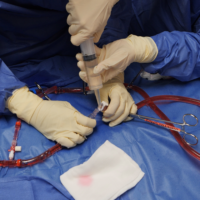
Foundation course (Introductory) in ECLS/ECMO 2025
Pathways
ECMO
General Information
Enrolled trainees 101
Open 09.10.2024
Close 13.06.2025
Available for ESICM limited places
Last Updated October 9, 2024
Enrollment Options
You are currently NOT enrolled in this course.
This course is a limited Seats course.
To access Limited Seats courses visit ESICM.
